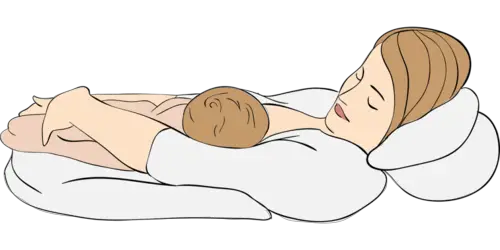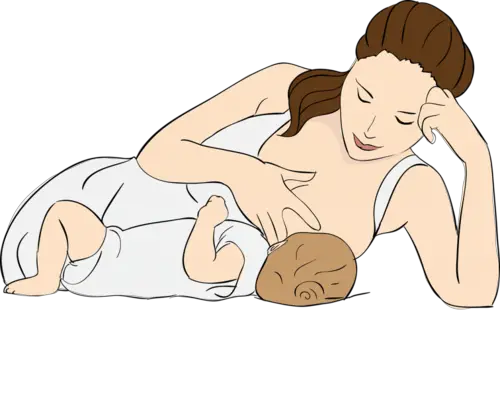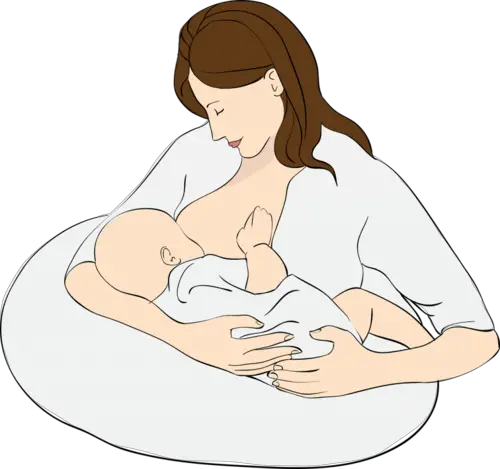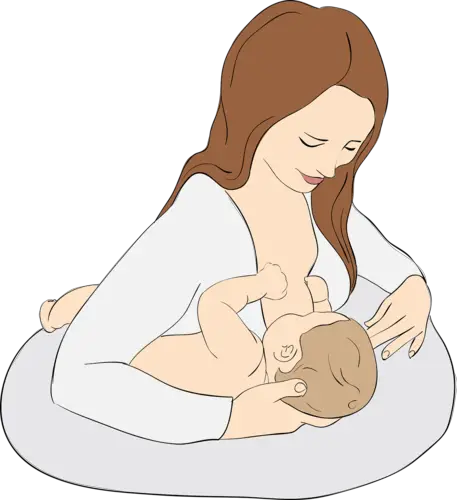When should I start breastfeeding my baby after delivery?
For some new mothers, milk may not start flowing immediately after the delivery of their babies. This is why lactation experts recommend that new mothers should start breastfeeding immediately; within an hour of their baby’s life and continue as often as possible to increase their milk let down.
The very first milk, which is known as colostrum, is very important in a newborn’s life. It is very rich in nutrients like proteins and carbohydrates and has antibodies, which are essential for the development of the baby. Colostrum is also low in fat.
In addition, it is easy to digest and has a laxative effect that enables the baby to pass gas. Some health professionals have linked too much gas in a baby’s stomach to colic so colostrum can help to reduce this gas.
How often should a baby breastfeed?
A newborn baby should be fed at least 8 to 12 times or even more every day. Breast feeding stimulates the production of milk hence the more you breastfeed the more your milk supply increases. Moreover, breast feeding frequently will prevent breast engorgement which is very painful.
How do I know my baby is hungry and needs to breastfeed?
This is a question that most new moms ask. But the first sign is when your breasts feel extremely full because it means that you have not breastfed your baby in a while. Other signs include baby crying and being restless even when they do not need a diaper change, sucking their fists, and turning their head in your direction when you hold them in a nursing position.
What are the main causes of low milk supply after delivery?
Health professional consider milk supply to be low if it does not meet the normal growth and development needs of the baby.
Some mothers may have low milk supply after delivery due to:
- Baby latching poorly due to reasons such as the mother having inverted or flat nipples
- Mother has not eaten well for a while
- Mother having medical conditions like diabetes
- If the baby is affected by the anaesthesia or epidural given to the mom during labor
How do I increase my milk supply?
Fortunately, low milk supply is usually not a permanent situation. There are various ways you can increase your milk supply to meet the needs of your baby.
- Feeding as often as possible.
- Taking enough rest
- Latching the baby properly
- Compressing breasts when the baby is feeding to increase milk let down
- Pumping milk after feeding the baby to ensure that the breasts are emptied completely
- Taking lots of fluid especially water
- Eating a balanced diet without skipping any meal
Which is the best breastfeeding Position?
The Laid-back position

Lying on the side position

The cradle-hold position

The football/rugby ball hold position

My nipples hurt when breastfeeding, what should I do?
Painful nipples are as a result of several factors but the most common is the shallow latch. If your baby is unable to latch deeply on the nipple, the nipple becomes sore and very painful.
For starters, what you can do to avoid painful nipples is to ensure your baby puts the entire nipple and part of the areola into his or her mouth.
If your nipples are already sore and painful, you can use breast shields when feeding, apply cool compresses to the nipples after every feed or use gel pads to ensure the nipples remain dry.
An old practice that also worked for me was applying breast milk on the nipples after feeding and leaving them to dry. Many lactation experts actually recommend this as well.
I have inverted nipples, should I use breast/nipples shields?
Most nursing mothers do breastfeed their babies without the use of nipple shields despite having inverted/flat nipples. However, some babies find it challenging when trying to latch on an inverted nipple; hence you may need to use breast shields.
Is breastfeeding in public okay?
Breast feeding your baby in public is certainly not a criminal offense despite the uproar going on in the media. Nonetheless, I personally believe the answer to these questions boils down to personal preference. Are you okay exposing your boobs in public? If not, a nursing cover or nursing tank that covers the breast during feeding can come in handy. If you do not have a problem, then let your baby feed and ignore the noise around you.
I do not like breastfeeding, is it okay to pump and feed my baby using a bottle?
Yes, it is absolutely okay to pump and feed your baby using a bottle. All that matters is that your baby gets enough milk so that they can get the much-needed nutrients. Lactation professionals, however, argue that breastfeeding helps to create a special bond between mother and child as it releases oxytocin, which strengthens the link between them. It also assures the baby of security and gives them comfort thereby promoting positive growth and development.
What is breast engorgement and how do I deal with it?
When your breasts produce more milk than your baby can take, they become extremely full leading to what is commonly known as breast engorgement. The main causes of engorgement are blocked milk ducts and lack of adequate feeding. In extreme cases, breast engorgement if left untreated may lead to mastitis, which is extremely painful.
So how do you deal with engorgement? First, ensure that you are wearing a supportive nursing bra without an underwire. Pump at least every 2 to 3 hours and store the milk. Breastfeed as much as possible so that your body can adjust to the needs of your baby. After feeding, try cold compresses for at least 10 minutes. Take a hot shower and massage your breasts using moist heat to allow circulation and encourage milk flow before nursing. If nothing seems to work, consult your health care professional.
What if my baby does not burp after feeding?
One way to help your baby get rid of excess gas is through burping. Immediately after feeding, you should put your baby in an upright position against your chest with their chin on your shoulder for about 10 minutes to burp. In some cases, the baby may not burp after a few minutes. If this happens, just change the position and wait for another few minutes. As they get older, they learn to feed without swallowing a lot of air; hence, they may not burp.
Lynn
Lynn is a freelance writer, a wife, and a mother of two beautiful kids. Lynn started Infant Empire with the aim of making parenting easier for fellow mums and dads. She believes the parenting tips provided here will be of great help to all parents.Recommended Reading
When to Stop Using Dr. Brown Vent Bottles
We’ll answer exactly a few frequently asked questions involving Dr. Brown’s popular anti-colic venting system bottles.
7 Best Bottle Warmer For Comotomo Bottles Reviewed
If you are wondering which warmer is best for this bottles, below is a comprehensive guide of the best bottle warmer for Comotomo bottles.
When to Stop Sterilizing Baby Bottles
As your baby grows older, you be asking when to stop sterilizing baby bottles, or whether it's necessary to sterilize bottles at all.
How To Get A Deeper Latch When Breastfeeding: Inverted Nipples Solution (2022)
New moms with inverted or flat nipples may have a hard time getting a deeper latch when breastfeeding since they may experience soreness and pain.
Parents Choice Formula vs Similac
Let's see the differences between Parent’s Choice vs Similac so you can make an informed decision about which formula is best for your baby.
Why Can’t You Add Warm Breast Milk to Cold?
Is there a reason why you can't add warm and cold breast milk? What are ways around it? We will answer all of that and more.